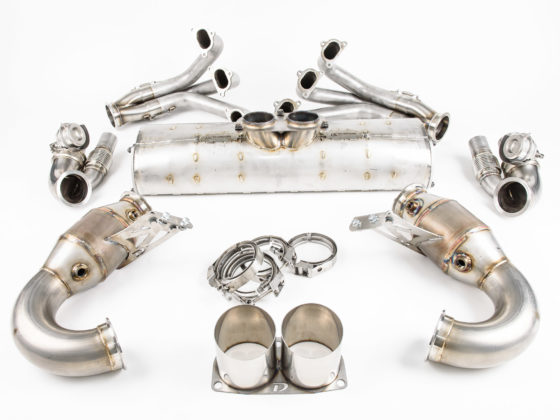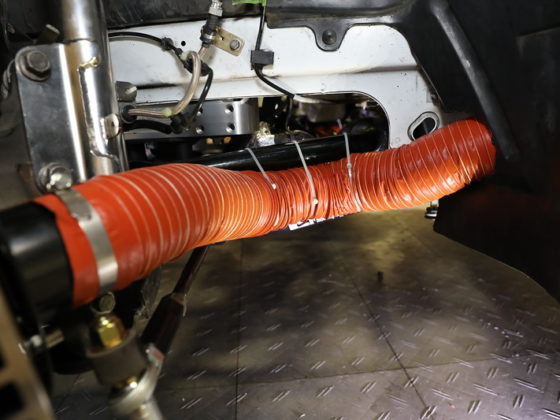,

You also have a really good view of the massive bridge assembly that spans the caliper’s open midsection. The bridge really contributes to stiffness. For brakes, system stiffness equates to a firmer pedal and more precise modulation.

The ST60 uses smaller leading edge pistons and larger trailing pistons, so there is more clamp force on the trailing, slower wearing tail of the pads and less on the fast wearing leading edge. This assures even wear and longer pad life.
Stoptech calipers also have dust boots made of high-temperature silicone. Most racing type calipers don’t have these, as they tend to burn up in track use. For street use, having no dust boots affects service life. We don’t plan on ever driving this car on the street but this is a good feature if you do!
The calipers have stainless steel abutments to protect the forged aluminum body from the wear of the brake pad backing plates. Without them, the backing plates can wear grooves into the alloy body which can cause sticking and inconsistent action.
You can also see more of the extensive CNC lightening cuts and pocketing on the caliper’s bottom.

The rotor’s iron alloy has been selected for its coefficient of friction and wear-resisting properties over a wide range of temperatures. The rotor has radial slots on the friction faces to evacuate gas from vaporizing pad material during high-speed applications to improve bite and to have consistent braking at high temperatures.

By allowing the friction ring part of the rotor to float freely, it will not distort with heat. One-piece iron rotors tend to warp into a cone shape when really hot, since the center section acts like a heat sink and causes differential expansion.
This can cause uneven pad contact, inconsistent braking force, poor pedal feel and inconsistent wear. Floating the rotor also makes the brake system more forgiving to caliper piston knockback caused by play in the wheel hub’s bearing system. Knockback can cause a long pedal after the wheels experience side loading.
The rotor hat also fastens to the rotor on vaned pillars to reduce heat transfer to the wheel hubs and to allow for cooling airflow with some air pumping between the hat and rotor.




2 comments
What finish is on those apex wheels? Wanting to achieve the same look!
I don’t know silver?